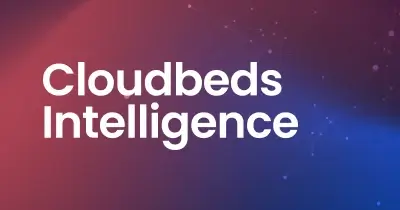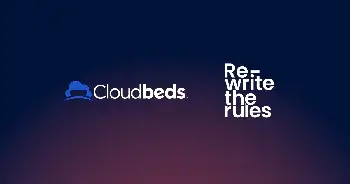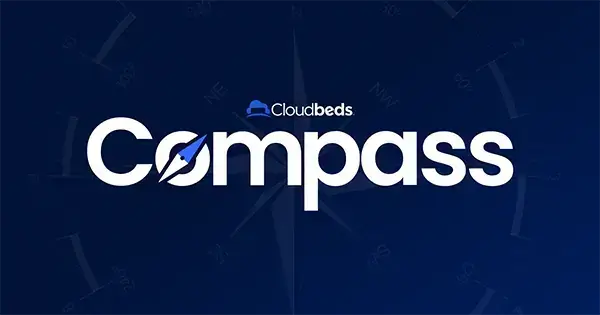A guide to OTA commission rates
To reap the benefits that OTAs offers, lodging businesses must pay a price. This price usually comes in some type of commission, which can vary depending on the booking channel and your property. It’s important to be strategic when building your channel mix, balancing different commission rates to see what drives to most ROI.
Here we break down everything you need to know about OTAs to make the best decisions for your business.
What are OTA commissions?
Online travel agency commission rates are either a fixed payment or percentage of sale that OTAs charge properties for a listing on their website. Hoteliers pay OTAs a commission because their properties can generate more visibility and increase occupancy rates from the traffic on OTA websites. It would be very difficult and costly to generate the same results through direct channels alone.
OTA commissions cover the enormous advertising costs that OTAs like Expedia and Booking.com spend to bring people to their site, along with support, development, reputation management, and more (in 2022, Expedia spent $3.8 billion USD in advertising).
How much commission do hotels pay to OTAs?
Unfortunately for hoteliers, booking sites have significantly increased their commission rates over the past few years. Previously, they sat at around 10%, and today, the average commission rate ranges from 15-30%+.
To illustrate, if an OTA charges 20% commission for a hotel booking, then a hotel that sold their room for a nightly room rate of $200 would be required to pay the OTA $40 for that OTA booking.
Some OTAs, like Airbnb, offset their commission rates and fees to guests to reduce the cost burden on properties. The commission is a critical factor for hotels when determining their pricing strategy and what OTAs to include as part of their distribution strategy, as the monthly commission fees from varying OTAs can quickly add up.
How do commissions vary?
While the average commission range for many big online travel agents is 15-30%, some smaller and more niche OTAs offer lower prices – sometimes as low as 4%. It’s common for commission rates for properties on the same OTA to vary based on their region and property type.
It’s crucial to visit an OTA’s website before forming a partnership to research their commission rate structure or download our directory and compare that with the value they provide. Consider each OTA’s reach and visibility within the hospitality industry and the types of hotel guests they attract.
Ask yourself:
- Does this OTA attract our customer base?
- What regions is this OTA most active in?
- Is this OTA better for hotels or vacation rentals
- How does their commission structure work? Do they offset any of the costs?
- How does this OTA add value to my distribution strategy?
- Is the higher commission fee worth it? What benefits or services does this OTA provide?
- How will this OTA impact my hotel revenue and profit margins?
Are there any other OTA fees or costs?
There can often be hidden fees in addition to the commission rates charged by booking platforms, making it critical to review your contract carefully.
Here are the most common costs and fees associated with OTAs.
Commission on upsells.
Some OTAs will take a commission on upsells that properties offer guests during the booking process, such as breakfast, towels, parking, and more. It’s a good idea to promote extras or upsells as incentives on your own website, which may also help drive more direct bookings, instead of paying even more fees to OTAs. If your OTA contract requires you to keep rate parity with the OTA, then adding special deals or discounted upsells could be another way to capture more direct bookings.
VAT/GST.
Depending on your region’s local tax laws, you may be required to pay additional taxes on top of your commission payment. If tax is not included, be sure to check with your local tax authority to see what the protocol is for reporting.
Channel manager commissions & fees.
If using a channel manager to connect your property management system (PMS) to OTAs (which is recommended!), ensure you are using a system that doesn’t charge any extra fees or commissions. Some channel managers require you to pay per OTA connection or transaction — a hidden cost that significantly adds up over time.
Cancellation rates.
An indirect cost that can affect your bottom-line revenue is higher cancellation rates associated with OTA listings. Many OTAs use ‘free cancellation’ to entice potential guests to book, while properties are left to deal with the repercussions when guests find a better deal. Phocuswire found that OTAs under Booking Holdings had a cancellation rate of 50% compared to an average direct booking cancellation rate of 18.2%. This can prove to be a challenge across the hotel industry when it comes to forecasting occupancy and other important metrics.
Increased visibility.
OTAs like Agoda offer hoteliers the option to pay higher commission fees in exchange for higher placement in OTA search results. Depending on your hotel’s marketing strategy, this cost could be worthwhile to help drive more online bookings.
How to reduce your OTA commission rate
You may be wondering — is there a way to reduce OTA commission rates?
This is a challenging question, and the answer is dependent on multiple factors. Large, recognizable hotel brands are more likely to successfully negotiate commission rates, while smaller independent properties face more of a battle.
It can be worth a try to see if you can negotiate a lower commission rate. However, it’s also a good idea to look at other approaches like:
Be more strategic with your OTA strategy.
Instead of connecting to the most ‘well-known’ OTAs that often have the highest commission rates, take time to research other distribution channels. The travel industry has dozens of niche and regional OTAs with much lower commission rates and the potential to attract your ideal traveler profile better. These travelers are less likely to cancel and more likely to be repeat guests. A mix between big and small OTAs can drive the results you need without the cost.
Restrict your available inventory on OTAs.
As part of your revenue management strategy, reduce your reliance on OTAs during the high season and invest in direct channels like your hotel website, booking engine, and Google Business Listing. Utilize OTAs during the low season when you need more demand to fill your hotel rooms.
Collect guest information and develop a communication strategy.
OTAs are a great way to introduce guests to your property, but once they stay with you, it’s your responsibility to deliver an exceptional guest experience and loyalty program that makes them want to return (and book direct!) Upon check-in, ensure that you collect guest contact information like email and mobile phone number to send in-stay and post-stay communication messages through text, WhatsApp, and email. Consider using a guest engagement solution to streamline guest communication with automated messaging to encourage new customers to return.
Cost of commissions vs. direct bookings
Acquiring guests, directly and indirectly, can be costly, but are both essential aspects of a hotel’s marketing strategy. As discussed above, the main costs associated with OTAs for hotels include:
- Commission rates (ranging from 15-30% on average) for each channel connection
- Channel manager fees (if your provider charges fees & commissions for connections or bookings)
- Taxes & additional fees
A successful direct booking strategy usually requires a multi-channel approach that incorporates a variety of digital channels such as social media, website, metasearch, search engine optimization (SEO), search engine marketing (SEM), and online listings like Google Business.
While many of these direct channels are free (think SEO, social media, and Google hotels free booking links), they do require a significant time investment to get set up and go through the optimization process (this should be an ongoing process).
Paid digital marketing channels like SEM and metasearch usually operate on a cost-per-click (CPC) business model where accommodation providers pay a set fee each time a traveler visits their website.
Both OTA listings and direct hotel marketing strategies should be used for a balanced distribution strategy. As a best practice, measure the ROI for each channel and experiment throughout the year to see what works best for your property.

















